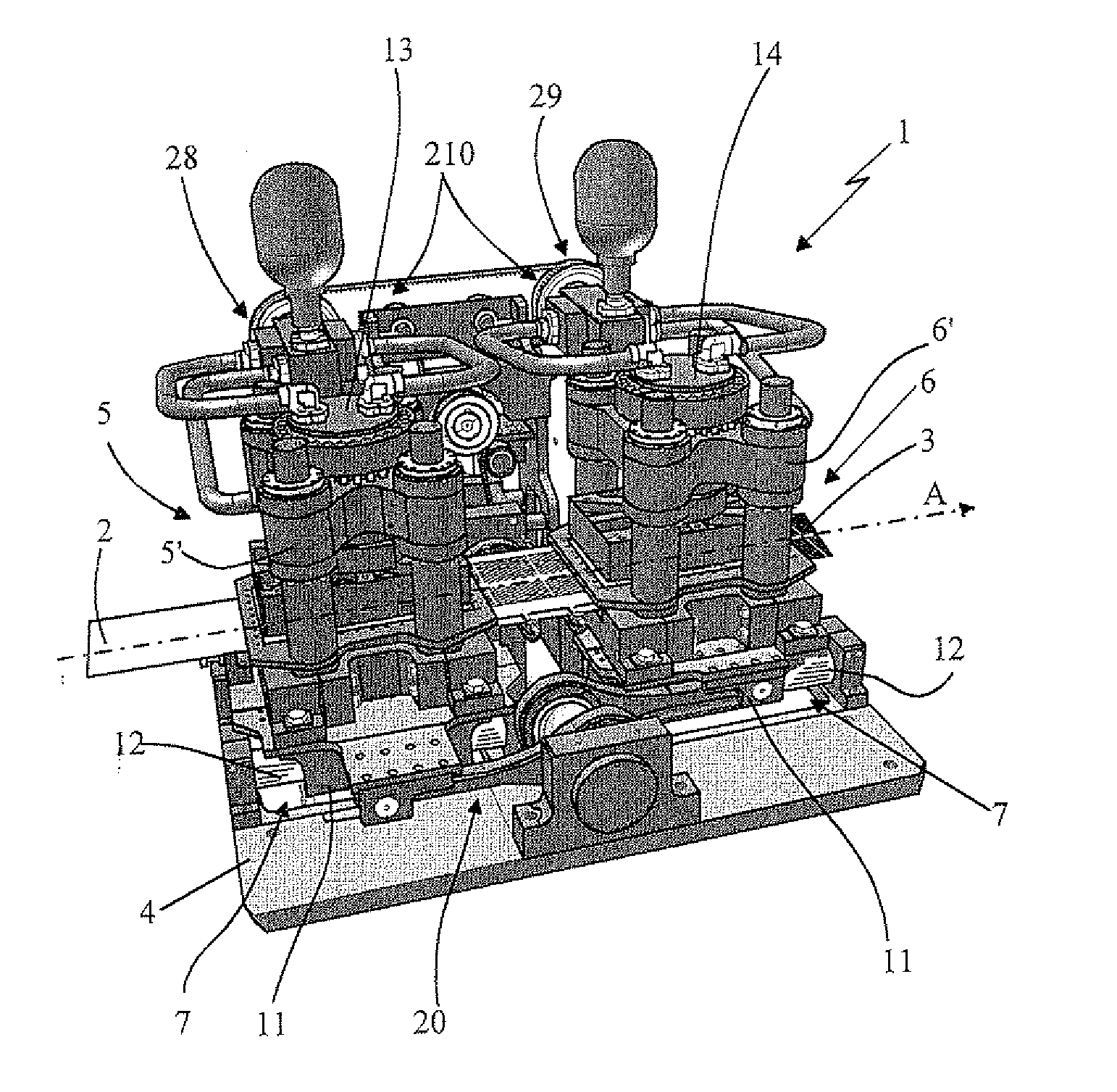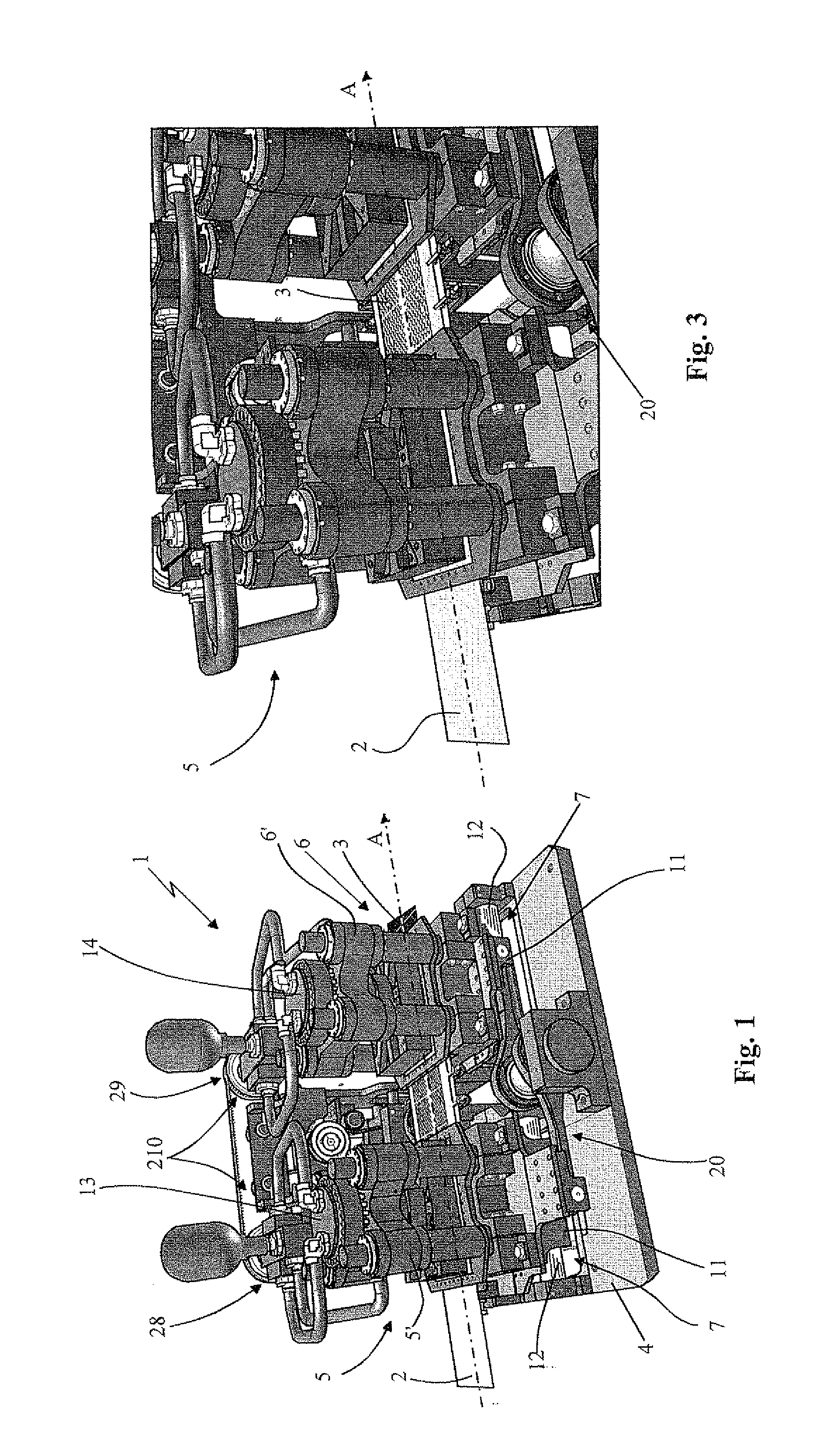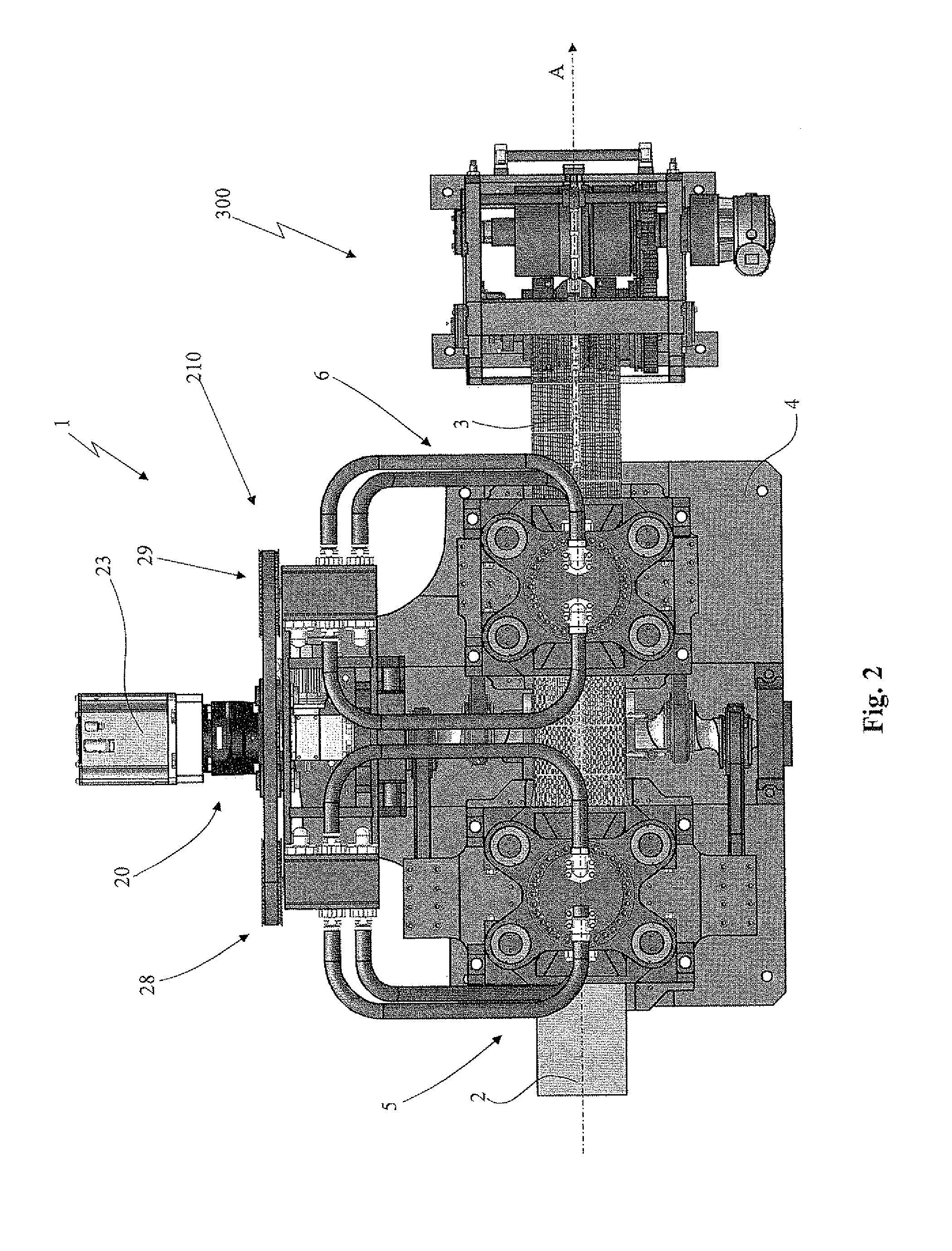Grid forming machine for making plates of electric storage cells
a technology of electric storage cells and forming machines, which is applied in the direction of stock shearing machines, final product manufacturing, manufacturing tools, etc., can solve the problems of not being able to produce grids with a high quality standard, the lead band of these machines is not high productivity, and the band is obviously limited, so as to achieve high production of grids per hour and continuous punching lead bands.
- Summary
- Abstract
- Description
- Claims
- Application Information
AI Technical Summary
Benefits of technology
Problems solved by technology
Method used
Image
Examples
Embodiment Construction
[0052]With reference to the attached drawings, the grid forming machine for making plates of electric storage cells object of the present invention has been wholly indicated with 1. It is operatively supplied continuously and at constant speed with a continuous lead band 2, advantageously obtained in one same production line, through a melting unit for continuously forming the lead band, arranged upstream of the grid forming machine 1. The machine 1 object of the present invention in output produces a continuous lead grid 3, which is treated through a traction group, a levelling group and a lug shearing group (not illustrated in the attached figures because they are of the per se known type), for example foreseen on a single machine arranged downstream of the machine in object and in the same production line.
[0053]The scrap produced by the grid forming machine 1, as well as that produced by the lug shearing machine, can advantageously be sent directly to the lead melting unit allowi...
PUM
| Property | Measurement | Unit |
|---|---|---|
| speed | aaaaa | aaaaa |
| area | aaaaa | aaaaa |
| shape | aaaaa | aaaaa |
Abstract
Description
Claims
Application Information
 Login to View More
Login to View More - R&D
- Intellectual Property
- Life Sciences
- Materials
- Tech Scout
- Unparalleled Data Quality
- Higher Quality Content
- 60% Fewer Hallucinations
Browse by: Latest US Patents, China's latest patents, Technical Efficacy Thesaurus, Application Domain, Technology Topic, Popular Technical Reports.
© 2025 PatSnap. All rights reserved.Legal|Privacy policy|Modern Slavery Act Transparency Statement|Sitemap|About US| Contact US: help@patsnap.com



